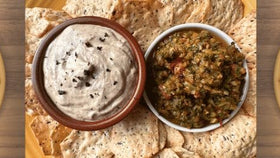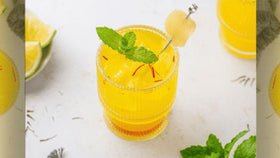Tea Quality Standards
All tea, regardless of what it is called or the grade it has received, comes from the same plant, Camellia sinensis. So if it all comes from the same plant, then why is the flavor spectrum for tea so wide? Before we expound on different types of tea and their quality standards, it is important to note that many of the beverages being referred to as “tea” are actually tisanes, beverages brewed similarly to tea, but using herbs, flowers, and other plant parts that are not sourced from the one, true tea plant. That said, there are plenty of tea varieties that use other herbs, spices, and flowers in addition to tea leaves—earl grey, masala chai, jasmine green tea, and many more. We will not be discussing the quality of tisanes or tea blends in this article.
What Is Tea Leaf Grading?
Tea grading is a categorization process that reveals how teas were harvested and the condition of the leaves.
What are the types of teas?
Grading shouldn’t be confused with tea variety, though it is simply another categorization for products sourced from the same plant. Teas will first be categorized by variety—black, green, oolong, pu-erh, or white. While these broader categories do tell us how the teas were processed, they don’t tell us much about the quality. So different aspects of the leaves need to be considered when the tea is “graded”.
The difference between black, green, and oolong teas is not so much in the leaf that is picked, but in what happens next. With black tea, the leaves are left to oxidize prior to being rolled and dried, with Oolong, the leaves are allowed to partially oxidize, and green tea is dried prior to oxidization taking place. Pu-erh, like oolong, will be partially oxidized, but it goes on to become fermented. White tea is different entirely, and must be picked soon after the delicate, new buds and leaves appear on the plant and, like green tea, it does not go through an oxidization process.
Now that you know the difference between tea types, let’s look at what goes into grading them.
Why is tea graded?
Tea leaf grading is a way for purveyors and consumers to understand the basic quality and flavor potential of tea leaves so they can make an informed purchasing decision. The “grade” of the tea will impact the price at which it is sold, how it is marketed, how it is brewed, and more.
How is tea graded?
To understand how tea leaves are graded, we first need to have knowledge of how the plant grows. Camellia sinensis is a tree. Like most trees, it has leaves and produces flowers. When the tea tree is cultivated, it will often appear more bush-like because it is frequently cut back in the way of harvesting tea leaves. Though other parts of the plant may be used, it is typically the leafset that tea growers will harvest. The grade is based on which leaf or group of leaves they harvest and what stage of growth they are in. Furthermore, there are different grades for the different types of tea.
Ultimately, when determining tea grade, one will look at the size and shape of the leaf/leaves, the way it is rolled, the time it was harvested, and overall size and appearance. Tea grades can be listed by number or by name and differ from region-to-region, meaning so do the quality standards. Furthermore, tea grade alone does not guarantee quality, but does give you a base point to start. So after determining what grade of tea will provide you with the best possible value for your price point, we recommend using your senses to further determine quality.
Smell the dry tea. Quality tea will be fragrant and should smell very similar to how you would expect it to taste. Green tea will be fresh and grass-like, white tea will be delicate and floral, and black tea will be full-bodied and earthy.
Look at and touch tea leaves. Can you clearly see that they are rolled leaves or are they dry, brittle, broken, or powdery. The leaves should hold their form. If not, they may have been over-dried or are past their prime.
Taste the tea. Tea should be extremely flavorful, regardless what variety you have chosen. If it is the equivalent of colored water, the quality is not on par with good tea.
Listen to your tea. Yes, we are aware that the dried tea leaves aren’t going to directly speak to you, but if you do your research on the purveyor and where they have sourced the leaves, you will likely be able to uncover their story—where they came from and the way they were processed—which will give great insight into their quality. Then again, there is an age-old practice of reading the tea leaves, so maybe the leaves at the bottom of your cup will reveal an even more intriguing tale.










Slofoodgroup
Author